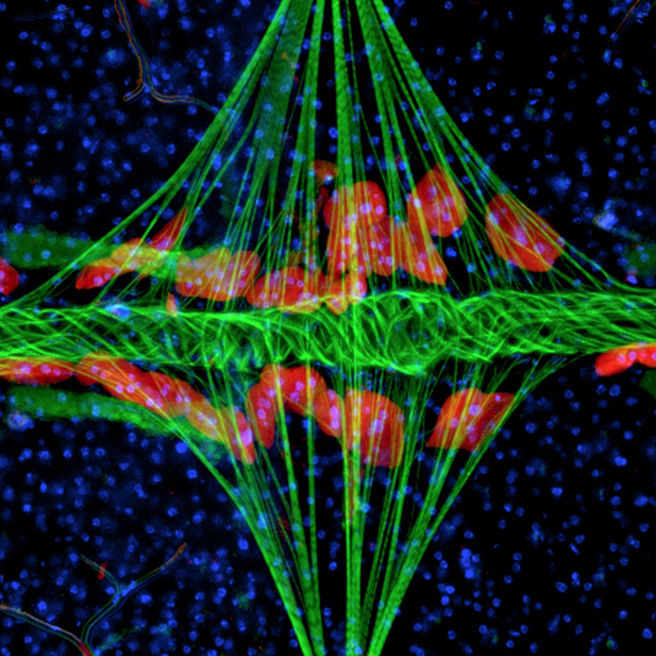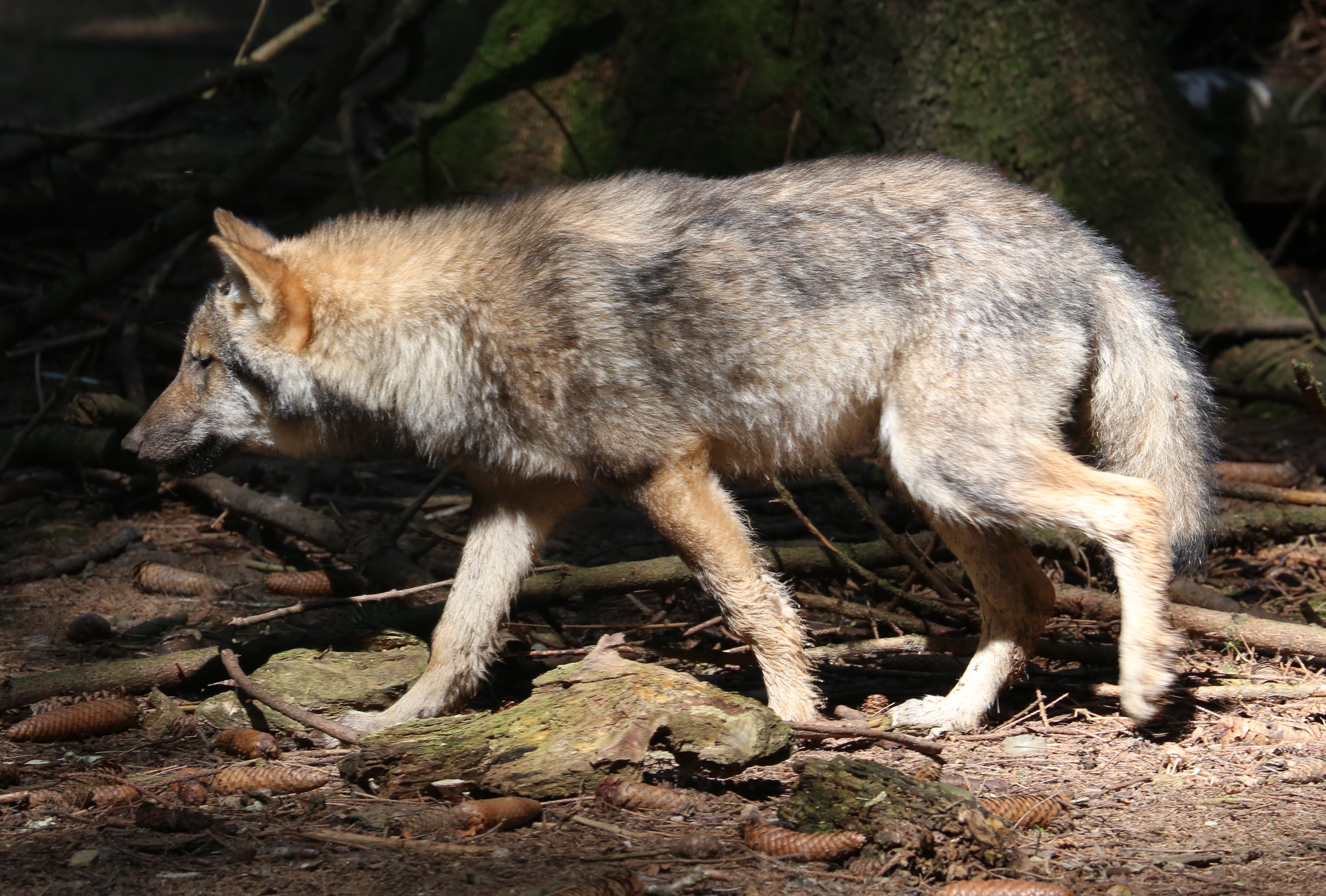|
Anopheles Arabiensis
''Anopheles arabiensis'' is a zoophilic species of mosquito and a vector of disease endemic to Africa. Genome Polytene chromosomes have a high degree of gene polymorphism due to paracentric inversions. This is also unusually high for the genus. (See the chapter by Kitzmiller 1976.) There is a well studied adaptive inversion. Kirkpatrick and Barrett 2015 and Sharakhov et al. 2006 find an inversion providing ''A. arabiensis'' with some of its adaptation to arid environments. They also find this inversion has been introgressed across more widely in the genus, providing similar adaptive benefit. Symbionts Not thought to naturally serve as a host of ''Wolbachia'' until Baldini et al. 2018 showed to the contrary. NIHMS 1531069. Hosts Hosts include ''Bos taurus''. ''A. arabiensis'' is especially known as a zoophilic haematophage. Parasites Not a vector of '' Plasmodium berghei''. Range The distribution is Afrotropical. There was a brief invasion into Brazil in 1930 ... [...More Info...] [...Related Items...] OR: [Wikipedia] [Google] [Baidu] |
Zoophilic
Zoophily, or zoogamy, is a form of pollination whereby pollen is transferred by animals, usually by invertebrates but in some cases vertebrates, particularly birds and bats, but also by other animals. Zoophilous species frequently have evolved mechanisms to make themselves more appealing to the particular type of pollinator, e.g. brightly colored or scented flowers, nectar, and appealing shapes and patterns. These plant-animal relationships are often mutually beneficial because of the food source provided in exchange for pollination. Pollination is defined as the transfer of pollen from the anther to the stigma. There are many vectors for pollination, including abiotic (wind and water) and biotic (animal). There are benefits and costs associated with any vector. For instance, using animal pollination is beneficial because the process is more directed and often results in pollination. At the same time it is costly for the plant to produce rewards, such as nectar, to attract anim ... [...More Info...] [...Related Items...] OR: [Wikipedia] [Google] [Baidu] |
Bos Taurus
Cattle (''Bos taurus'') are large, domesticated, bovid ungulates widely kept as livestock. They are prominent modern members of the subfamily Bovinae and the most widespread species of the genus '' Bos''. Mature female cattle are called cows and mature male cattle are bulls. Young female cattle are called heifers, young male cattle are oxen or bullocks, and castrated male cattle are known as steers. Cattle are commonly raised for meat, for dairy products, and for leather. As draft animals, they pull carts and farm implements. Cattle are considered sacred animals within Hinduism, and it is illegal to kill them in some Indian states. Small breeds such as the miniature Zebu are kept as pets. Taurine cattle are widely distributed across Europe and temperate areas of Asia, the Americas, and Australia. Zebus are found mainly in India and tropical areas of Asia, America, and Australia. Sanga cattle are found primarily in sub-Saharan Africa. These types, sometimes cl ... [...More Info...] [...Related Items...] OR: [Wikipedia] [Google] [Baidu] |
Avian Malaria
Avian malaria is a parasitic disease of birds, caused by parasite species belonging to the genera ''Plasmodium'' and '' Hemoproteus'' (phylum Apicomplexa, class Haemosporidia, family Plasmoiidae). The disease is transmitted by a dipteran vector including mosquitoes in the case of ''Plasmodium'' parasites and biting midges for ''Hemoproteus.'' The range of symptoms and effects of the parasite on its bird hosts is very wide, from asymptomatic cases to drastic population declines due to the disease, as is the case of the Hawaiian honeycreepers. The diversity of parasites is large, as it is estimated that there are approximately as many parasites as there are species of hosts. As research on human malaria parasites became difficult, Dr. Ross studied avian malaria parasites. Co-speciation and host switching events have contributed to the broad range of hosts that these parasites can infect, causing avian malaria to be a widespread global disease, found everywhere except Antarctica. ... [...More Info...] [...Related Items...] OR: [Wikipedia] [Google] [Baidu] |
Ecological Model
An ecosystem model is an abstract, usually mathematical, representation of an ecological system (ranging in scale from an individual population, to an ecological community, or even an entire biome), which is studied to better understand the real system. Using data gathered from the field, ecological relationships—such as the relation of sunlight and water availability to photosynthetic rate, or that between predator and prey populations—are derived, and these are combined to form ecosystem models. These model systems are then studied in order to make predictions about the dynamics of the real system. Often, the study of inaccuracies in the model (when compared to empirical observations) will lead to the generation of hypotheses about possible ecological relations that are not yet known or well understood. Models enable researchers to simulate large-scale experiments that would be too costly or unethical to perform on a real ecosystem. They also enable the simulation of eco ... [...More Info...] [...Related Items...] OR: [Wikipedia] [Google] [Baidu] |
Annual Review Of Genetics
The ''Annual Review of Genetics'' is an annual peer-reviewed scientific review journal published by Annual Reviews. It was established in 1967 and covers all topics related to the genetics of viruses, bacteria, fungi, plants, and animals, including humans. The current editor is Tatjana Piotrowski. As of 2024, ''Journal Citation Reports'' gives the journal a 2023 impact factor of 8.7, ranking it eleventh out of 191 journals in the category "Genetics & Heredity". As of 2023, it is being published as open access, under the Subscribe to Open model. History In 1965, the nonprofit publisher Annual Reviews surveyed geneticists to determine if there was a need for an annual journal that published review articles about recent developments in the field of genetics. Responses to the survey were favorable, with the first volume of the ''Annual Review of Genetics'' published two years later in 1967. Its inaugural editor was Herschel L. Roman. As of 2020, it was published both in print and ... [...More Info...] [...Related Items...] OR: [Wikipedia] [Google] [Baidu] |
Anopheles Gambiae
The ''Anopheles gambiae'' complex consists of at least seven morphologically indistinguishable species of mosquitoes in the genus ''Anopheles''. The complex was recognised in the 1960s and includes the most important vectors of malaria in sub-Saharan Africa, particularly of the most dangerous malaria parasite, ''Plasmodium falciparum''. It is one of the most efficient malaria vectors known. The ''An. gambiae'' mosquito additionally transmits ''Wuchereria bancrofti'' which causes lymphatic filariasis, a symptom of which is elephantiasis. Discovery and elements The ''Anopheles gambiae'' complex or ''Anopheles gambiae'' sensu lato was recognized as a species complex only in the 1960s. The ''A. gambiae'' complex consists of: * '' Anopheles arabiensis'' Patton, 1905 * '' Anopheles bwambae'' White, 1985 * '' Anopheles melas'' Theobald, 1903 * '' Anopheles merus'' Dönitz, 1902 * '' Anopheles quadriannulatus'' (Theobald, 1911) * ''Anopheles gambiae'' Giles, 1902 sensu stricto (s.s. ... [...More Info...] [...Related Items...] OR: [Wikipedia] [Google] [Baidu] |
Extirpation
Local extinction, also extirpation, is the termination of a species (or other taxon) in a chosen geographic area of study, though it still exists elsewhere. Local extinctions are contrasted with extinction, global extinctions. Local extinctions mark a change in the ecology of an area. It has sometimes been followed by a replacement of the species taken from other locations, such as with wolf reintroduction. Discussion Glacial period, Glaciation is one factor that leads to local extinction. This was the case during the Quaternary glaciation, Pleistocene glaciation event in North America. During this period, most of the native North American species of earthworm were killed in places covered by glaciation. This left them open for colonization by European earthworms brought over in soil from Europe. Species naturally become extinct from islands over time; this can be either local extinction if the species also occurs elsewhere, or in cases of endemism, island endemism, outright ex ... [...More Info...] [...Related Items...] OR: [Wikipedia] [Google] [Baidu] |
Brazil
Brazil, officially the Federative Republic of Brazil, is the largest country in South America. It is the world's List of countries and dependencies by area, fifth-largest country by area and the List of countries and dependencies by population, seventh-largest by population, with over 212 million people. The country is a federation composed of 26 Federative units of Brazil, states and a Federal District (Brazil), Federal District, which hosts the capital, Brasília. List of cities in Brazil by population, Its most populous city is São Paulo, followed by Rio de Janeiro. Brazil has the most Portuguese-speaking countries, Portuguese speakers in the world and is the only country in the Americas where Portuguese language, Portuguese is an Portuguese-speaking world, official language. Bounded by the Atlantic Ocean on the east, Brazil has a Coastline of Brazil, coastline of . Covering roughly half of South America's land area, it Borders of Brazil, borders all other countries and ter ... [...More Info...] [...Related Items...] OR: [Wikipedia] [Google] [Baidu] |
Biological Invasion
An invasive species is an introduced species that harms its new environment. Invasive species adversely affect habitats and bioregions, causing Ecology, ecological, Natural environment, environmental, and/or Economy, economic damage. The term can also be used for native species that become harmful to their native environment after human alterations to its food web. Since the 20th century, invasive species have become serious economic, social, and environmental threats worldwide. Invasion of long-established ecosystems by organisms is a natural phenomenon, but human-facilitated introductions have greatly increased the rate, scale, and geographic range of invasion. For millennia, Human, humans have served as both accidental and deliberate dispersal agents, beginning with their early human migrations, earliest migrations, accelerating in the Age of Discovery, and accelerating again with the spread of international trade. Notable invasive plant species include the kudzu vine, Her ... [...More Info...] [...Related Items...] OR: [Wikipedia] [Google] [Baidu] |
Afrotropical
The Afrotropical realm is one of the Earth's eight biogeographic realms. It includes Sub-Saharan Africa, the southern Arabian Peninsula, the island of Madagascar, and the islands of the western Indian Ocean. It was formerly known as the Ethiopian Zone or Ethiopian Region. Major ecological regions Most of the Afrotropical realm, except for Africa's southern tip, has a tropics, tropical climate. A broad belt of deserts, including the Atlantic coastal desert, Atlantic and Sahara deserts of northern Africa and the Arabian Desert of the Arabian Peninsula, separates the Afrotropic from the Palearctic realm, which includes northern Africa and temperate Eurasia. Sahel and Sudan South of the Sahara, two belts of tropical and subtropical grasslands, savannas, and shrublands, tropical grassland and savanna run east and west across the continent, from the Atlantic Ocean to the Ethiopian Highlands. Immediately south of the Sahara lies the Sahel belt, a transitional zone of semi-arid sho ... [...More Info...] [...Related Items...] OR: [Wikipedia] [Google] [Baidu] |
Species Distribution
Species distribution, or species dispersion, is the manner in which a biological taxon is spatially arranged. The geographic limits of a particular taxon's distribution is its range, often represented as shaded areas on a map. Patterns of distribution change depending on the scale at which they are viewed, from the arrangement of individuals within a small family unit, to patterns within a population, or the distribution of the entire species as a whole (range). Species distribution is not to be confused with biological dispersal, dispersal, which is the movement of individuals away from their center of origin, region of origin or from a population center of high population density, density. Range In biology, the range of a species is the geographical area within which that species can be found. Within that range, distribution is the general structure of the species population, while dispersion is the variation in its population density. Range is often described with the foll ... [...More Info...] [...Related Items...] OR: [Wikipedia] [Google] [Baidu] |
Humana Press
Humana Press was an American academic publisher of science, technology, and medical books and journals founded in 1976. It was bought by Springer Science+Business Media in 2006. History Humana published more than 100 new books and 25 journals per year with a backlist of approximately 1,500 titles in areas such as molecular biology, neuroscience, and medicine. The company was founded in 1976 in Clifton, New Jersey, by Thomas L. Lanigan and his wife, Julia Lanigan, both chemists, and published its first book in 1977. The company was acquired by Springer Science+Business Media in the fall of 2006 and continues to publish titles of book series under the Humana Press imprint. "Springer Buys Humana; Blackwell Adds Brandywine." September 5, 2006. Selected publications Book ser ...
|





